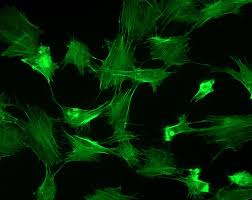When cells migrate, they normally do so by adopting a characteristic polarized morphology with the nucleus seemingly pushing from behind. The internal cytoskeleton forms well-organized arrays, and the mechanics within the cell, as well as the interactions with the surface on which the cell is moving, are well understood. It has been assumed that the nucleus itself is important for directed migration. Graham et al. examined the migration of enucleated mammalian cells and found that the nucleus was dispensable for directed migration, at least along flat surfaces. When it came to migration in three-dimensional (3D) environments, the lack of a nucleus was important. It seems that the mechanical interactions between the cytoskeleton and the nucleoskeleton provide the physical robustness required for cells to push their way through 3D environments.







